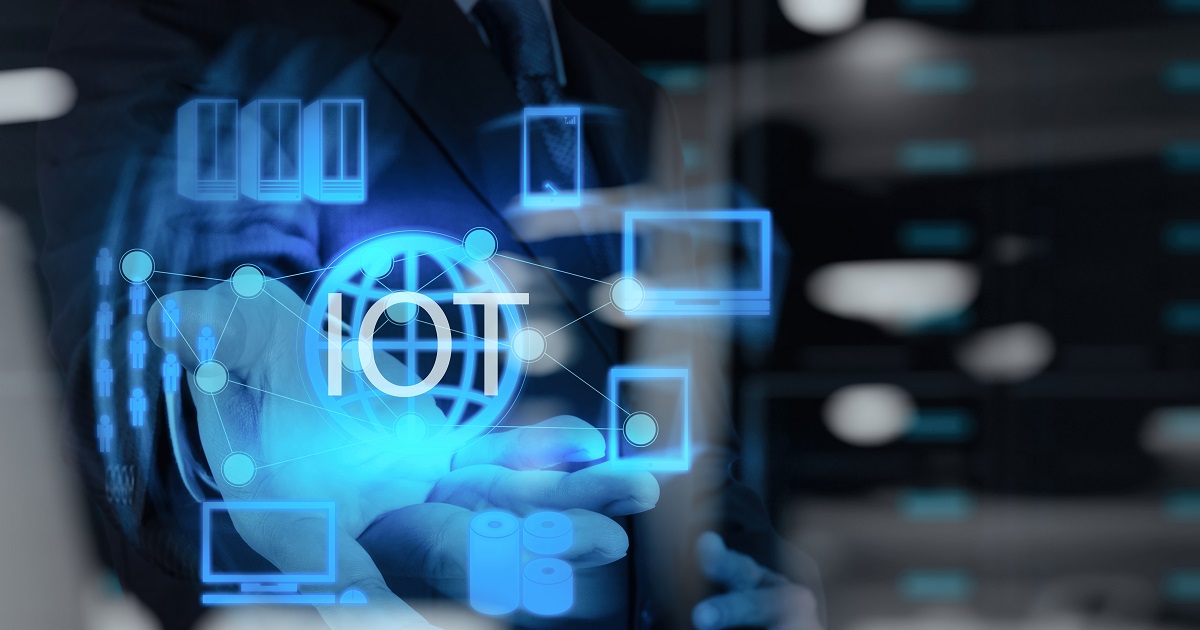
IoT Security
Article | June 28, 2023
Nothing is more innovative or sophisticated than the products being made by the wearables industry in the "smart" era. Individuals track, analyze, monitor, and transmit personal data using these tangible wearable gadgets. Moreover, the adaptable wearable technology is opening up new horizons with business-focused smartphone apps. However, it is still in its early stages, and according to recent developments in this field, the major players in wearable technology are concentrating on developing products with a focus on business applications.
These intelligent Internet of Things (IoT) devices are now widely employed in a variety of businesses and help detect biometric data such as heart rate and sleep habits, among others. In the coming ten years, wearable IoT technology or devices ought to become an integral part of every individual’s daily life.
Businesses around the world are incorporating the newest technologies into their functioning and are looking at digitally altering their impact in the market. With the majority of people already accustomed to using smartphones, they are now also getting familiar with utilizing wearable technology, such as smartwatches, jewelry, and fitness bands. Therefore, the demand for applications is increasing along with technology as we become more technologically adept.
Rising Wearable Industries
Health and Fitness Wearables
The health, fitness, and fashion industries are closely related to any wearable technology or device. People are now frequently using smartwatches to monitor their heart rate and the number of steps they take when walking or running, which has boosted the industries with this technology. IoT devices include medical sensors to track progress in terms of health. It is possible to determine how healthy a person's lifestyle is by gathering accurate health statistics from these devices. Additionally, it monitors sleeping patterns, enhancing your overall quest for wellness.
Gaming Wearables
Gaming is a significant new market for wearable technology and one which is booming. The most prevalent category of wearables in the market is virtual reality (VR) headsets. With VR devices like the Oculus Rift or Playstation VR, players are immediately immersed in otherworldly experiences. Several kinds of breathtaking experiences are now accessible to players everywhere, thanks to VR wearables.
Connected Cars
Automobiles are steadily gaining traction among IoT devices, but they are still a small market (just 0.05 percent of all connected devices are cars), and Ford and Tesla are vying for the top spot. Ford has dominated the connected car market, with Subaru being the only other manufacturer to see any appreciable growth in new connections since July 2020. In contrast, other producers are fighting for a sizable market share as the potential to grow this segment is highly exponential.
Conclusion
Today, wearable technology is planned, developed, distributed, and used in a variety of consumer and corporate markets. The ways in which these markets overlap and influence one another are constantly changing. IoT will significantly change how businesses engage with customers, streamline their operations, and contribute to the creation of a system that relies on such data.
Read More

IoT Security
Article | July 17, 2023
Explore the IoT security solutions for critical issues and proactive solutions for the safe implementation of connected devices. Delve into cross-domain interactions for secure data storage.
Contents
1. Introduction
1.1 Significance of IoT Security for Safe Implementation
2. IoT Security Landscape
2.1 Emerging Threats in IoT Environments
2.2 Importance of Proactive Security Measures
3. Challenges Posed in IoT Systems
3.1 Cross-Domain Interactions
3.2 Denial of Service (DoS) Attacks
3.3 Insecure Interfaces and APIs
3.4 Vulnerable Third-Party Components
3.5 Safeguarding Data Storage and Retention
4. Solutions to Prevent Threats
4.1 Secure Integration and Communication
4.2 Traffic Monitoring and Analysis
4.3 Robust Authentication and Authorization Protocols
4.4 Patch Management and Vulnerability Monitoring
4.5 Access Control and User Authentication
5 Conclusion
1. Introduction
1.1 Significance of IoT Security for Safe Implementation
The significance of IoT connectivity and security for safe implementation is paramount in today's interconnected world. Some essential points highlight its importance at both the business and advanced levels. IoT devices collect and transmit vast amounts of sensitive data. Without proper security measures, this data can be intercepted, leading to breaches of privacy and potential misuse of personal or corporate information. Implementing robust IoT security ensures the protection of data throughout its lifecycle. Safeguarding Critical Infrastructure is crucial as Many IoT deployments are integrated into critical infrastructure systems such as power grids, transportation networks, and healthcare facilities. A breach in the security of these interconnected systems can have severe consequences, including disruption of services, financial losses, and even threats to public safety. IoT security helps mitigate these risks by preventing unauthorized access and potential attacks.
Mitigating financial losses, ensuring operational continuity and preventing IoT botnets and DDoS attacks contribute to security as IoT devices are often integrated into complex ecosystems, supporting various business operations. In recent years, compromised IoT devices have been used to create massive botnets for launching distributed denial-of-service (DDoS) attacks. These attacks can overwhelm networks and cause significant disruptions, affecting the targeted businesses and the internet infrastructure as a whole. Robust IoT security measures, such as strong authentication and regular device updates, can help prevent these attacks.
2. IoT Security Landscape
2.1 Emerging Threats in IoT Environments
Botnets and DDoS Attacks
Botnets, consisting of compromised IoT devices, can be leveraged to launch massive distributed denial-of-service (DDoS) attacks. These attacks overwhelm networks, rendering them inaccessible and causing disruptions to critical services.
Inadequate Authentication and Authorization
Weak or non-existent authentication and authorization mechanisms in IoT devices can allow unauthorized access to sensitive data or control of connected systems. This can lead to unauthorized manipulation, data breaches, and privacy violations.
Firmware and Software Vulnerabilities
IoT devices often rely on firmware and software components that may contain vulnerabilities. Attackers can exploit these weaknesses to gain unauthorized access, execute malicious code, or extract sensitive information.
Lack of Encryption and Data Integrity
Insufficient or absent encryption mechanisms in IoT communications can expose sensitive data to interception and tampering. Without data integrity safeguards, malicious actors can modify data transmitted between devices, compromising the integrity and reliability of the system.
Physical Attacks and Tampering
IoT devices deployed in public or accessible locations are vulnerable to physical attacks. These attacks include tampering, theft, or destruction of devices, which can disrupt services, compromise data, or manipulate the functioning of the IoT ecosystem.
Insider Threats
Insiders with authorized access to IoT systems, such as employees or contractors, may abuse their privileges or inadvertently introduce vulnerabilities. This can include unauthorized access to sensitive data, intentional manipulation of systems, or unintentional actions compromising security.
Supply Chain Risks
The complex and global nature of IoT device supply chains introduces potential risks. Malicious actors can exploit vulnerabilities in the manufacturing or distribution process, implanting backdoors or tampering with devices before they reach end-users.
2.2 Importance of Proactive Security Measures
Security measures are vital for ensuring the safety and reliability of IoT environments. Organizations can mitigate risks and stay ahead of potential vulnerabilities and threats by taking a proactive approach. These measures include conducting regular vulnerability assessments, implementing robust monitoring and detection systems, and practicing incident response preparedness. Proactive security measures also promote a 'Security by Design' approach, integrating security controls from the outset of IoT development. Compliance with regulations, safeguarding data privacy, and achieving long-term cost savings are additional benefits of proactive security. Being proactive enables organizations to minimize the impact of security incidents, protect sensitive data, and maintain their IoT systems' secure and reliable operation.
3. Challenges Posed in IoT Systems
3.1 Cross-Domain Interactions
Cross-domain interactions refer to the communication and interaction between IoT devices, systems, or networks that operate in different domains or environments. These interactions occur when IoT devices need to connect and exchange data with external systems, platforms, or networks beyond their immediate domain. Incompatibilities in protocols, communication standards, or authentication mechanisms can create vulnerabilities and potential entry points for attackers.
3.2 Denial of Service (DoS) Attacks
Denial of Service attacks are malicious activities aimed at disrupting or rendering a target system, network, or service unavailable to its intended users. In a DoS attack, the attacker overwhelms the targeted infrastructure with an excessive amount of traffic or resource requests, causing a significant degradation in performance or a complete service outage. Protecting IoT devices and networks from DoS attacks that aim to disrupt their normal operation by overwhelming them with excessive traffic or resource requests becomes challenging. The issue here lies in distinguishing legitimate traffic from malicious traffic, as attackers constantly evolve their techniques.
3.3 Insecure Interfaces and APIs
Insecure interfaces and application programming interfaces (APIs) refer to vulnerabilities or weaknesses in the interfaces and APIs used by IoT devices for communication and data exchange. An interface is a point of interaction between different components or systems, while an API allows applications to communicate with each other. Insecure interfaces and APIs can be exploited by attackers to gain unauthorized access to IoT devices or intercept sensitive data. Ensuring secure authentication and authorization mechanisms, proper encryption of data in transit, and secure storage of API keys and credentials, thus, becomes a challenge.
3.4 Vulnerable Third-Party Components
Vulnerable third-party components refer to software, libraries, frameworks, or modules developed and maintained by external parties and integrated into IoT devices or systems. These components may contain security vulnerabilities that attackers can exploit to gain unauthorized access, manipulate data, or compromise the overall security of the IoT ecosystem. Pain points arise from the challenge of assessing the security of third-party components, as organizations may have limited visibility into their development processes or dependencies.
3.5 Safeguarding Data Storage and Retention
Data storage and retention refers to the management and security of data collected and generated by IoT devices throughout its lifecycle. Safeguarding stored IoT data throughout its lifecycle, including secure storage, proper data retention policies, and protection against unauthorized access or data leakage, poses a threat. Ensuring secure storage infrastructure, protecting data at rest and in transit, and defining appropriate data retention policies include safeguarding data and maintaining the privacy of stored data. Failure to implementing strong encryption, access controls, and monitoring mechanisms to protect stored IoT data leads to this issue.
4. Solutions to Prevent Threatsc
4.1 Secure Integration and Communication
Implement secure communication protocols, such as transport layer security (TLS) or virtual private networks (VPNs), to ensure encrypted and authenticated communication between IoT devices and external systems. Regularly assess and monitor the security posture of third-party integrations and cloud services to identify and mitigate potential vulnerabilities. Organizations need to invest time and resources in thoroughly understanding and implementing secure integration practices to mitigate the risks associated with cross-domain interactions.
4.2 Traffic Monitoring and Analysis
Deploy network traffic monitoring and filtering mechanisms to detect and block suspicious traffic patterns. Implement rate limiting, traffic shaping, or access control measures to prevent excessive requests from overwhelming IoT devices. Utilize distributed denial of service (DDoS) mitigation services or hardware appliances to handle volumetric attacks. Organizations must deploy robust traffic analysis and anomaly detection mechanisms to identify and mitigate DoS attacks promptly. Additionally, scaling infrastructure and implementing load-balancing mechanisms become essential to handle sudden surges in traffic during an attack.
4.3 Robust Authentication and Authorization Protocols
Apply secure coding practices and implement strong authentication and authorization mechanisms for interfaces and APIs. Utilize secure communication protocols (e.g., HTTPS) and enforce strict access controls to prevent unauthorized access. Regularly update and patch interfaces and APIs to address any known vulnerabilities. Organizations must conduct regular security audits of their interfaces and APIs, implement strong access controls, and regularly update and patch vulnerabilities to address these effectively.
4.4 Patch Management and Vulnerability Monitoring
Conduct thorough security assessments of third-party components before integration, verifying their security track record and ensuring they are regularly updated with security patches. Establish a process for monitoring and addressing vulnerabilities in third-party components, including timely patching or replacement. Establishing strict vendor evaluation criteria, conducting regular security assessments, and maintaining an up-to-date inventory of third-party components can help address these issues and mitigate the risks associated with vulnerable components.
4.5 Access Control and User Authentication
Encrypt stored IoT data to protect it from unauthorized access or leakage. Implement access controls and user authentication mechanisms to restrict data access based on role or privilege. Establish data retention policies that comply with relevant regulations and securely dispose of data when no longer needed. Clear data retention policies should be established, specifying how long data should be stored and when it should be securely deleted or anonymized to minimize data leakage risks.
It's important to note that these solutions should be tailored to specific organizational requirements and constantly evaluated and updated as new threats and vulnerabilities emerge in the IoT security landscape.
5. Conclusion
Ensuring the safe implementation of IoT requires overcoming various security challenges through proactive measures and a comprehensive approach. By implementing proactive security measures, organizations can mitigate risks and maintain the safety and reliability of IoT environments. Overcoming these challenges requires organizations to invest in certain integration practices, traffic analysis, authentication mechanisms, encryption protocols, and vendor evaluation criteria. Overcoming IoT security challenges for safe implementation necessitates a proactive and comprehensive approach encompassing vulnerability management, monitoring and detection, incident response preparedness, secure design practices, compliance with regulations, and robust data storage and retention mechanisms.
The emergence in IoT security encompasses the incorporation of machine learning and AI for improved threat detection, the application of blockchain for secure transactions and device authentication, the integration of security measures at the edge through edge computing, the establishment of standardized protocols and regulatory frameworks, the adoption of advanced authentication methods, and the automation of security processes for efficient IoT security management. These trends aim to address evolving risks, safeguard data integrity and privacy, and enable IoT systems' safe and secure implementation.
Read More

IoT Security
Article | October 11, 2023
IoT use cases span a variety of sectors and businesses. A typical Internet of Things (IoT) solution consists of a large number of heterogeneous IoT devices with sensors that generate data in a variety of formats at varying rates, which is then processed and analyzed to derive insights. In addition, IoT devices can connect to a network directly or through a gateway device, allowing them to communicate with one another and with cloud services and applications.
Create a layered architecture
An organization's IoT solution's architecture outlines its overall layout, including its physical components (such as sensors and actuators) and virtual components (like services and communication protocols). IoT system complexity can be managed by utilizing a modular strategy that divides the architecture into several layers and focuses on each tier separately.
IoT architectures have a tendency to outsource work to the edges of IoT networks (where the physical devices connect to the cloud). This aids data-driven IoT applications by lowering latency, enhancing privacy, and lowering bandwidth costs.
Devices layer
The device layer components include physical sensors and actuators that link to IoT devices and the IoT devices themselves. Although sensors and actuators are often not considered "smart" devices, they frequently connect to the architectural elements with higher computing power, either directly or indirectly (with the aid of gateway devices).
These devices often use over-the-wire protocols like Ethernet or wireless protocols like Bluetooth, Zigbee, WiFi, LTE, or RFID to transmit data.
Edge layer
The analytics and pre-processing services that are offered at the network's edge are included in the concept of the edge layer. This layer acts as a central integration point for subsequent layers (devices layer). For the upstream layers, it offers routing and device control features. In addition, this layer can be connected to pub-sub systems to convey events and listen in on them.
The size and heterogeneity of the devices and connectivity involved make designing data-driven IoT solutions hard. This article discusses some techniques for creating safe, adaptable, and scalable IoT architectures.
Read More

Industrial IoT, IoT Security
Article | July 12, 2023
Explore the IoT certifications and grow your skills with the transforming landscape. Including Iot security certifications, this curated list will help you to boost career in the IoT industry.
As the Internet of Things continues to expand its reach across industries, the need for robust security measures to safeguard connected devices and data has become paramount. With IoT systems' growing complexity and interconnectivity, organizations seek professionals with specialized knowledge and expertise in IoT security. In response to this demand, various certifications have emerged to validate individuals' skills and provide them with a competitive edge in the IoT industry. In this article, we will explore some key IoT security certifications that can significantly enhance one's career prospects and contribute to IoT solutions' safe and secure deployment.
1. IoT Security Certification and Cybersecurity
Intertek’s IoT Security Certification and Cybersecurity provides IoT certification and testing services to validate the security of connected products. Securing endpoints and ecosystems has become crucial with the rapid growth of the Internet of Things. Intertek's total quality assurance approach involves understanding the product, use cases, integration with other systems, and developing a roadmap to ensure compliance with industry standards and regulations. Their IoT security and cybersecurity experts guide clients in choosing the most relevant program for their product and target markets, instilling confidence in product security. Intertek offers services such as the Cyber Assured Program, vulnerability assessments, penetration testing, testing to standards like ANSI/UL 2900 and IEC 62443, connected medical device security, industrial automated control systems security (IEC 62443), and advisory services. Intertek's expertise helps clients address cybersecurity risks and ensure the security of their IoT products.
2. Securing IoT - Build secure IoT solutions: 2-in-1
The Securing IoT: Build Secure IoT Solutions: 2-in-1 course is a comprehensive training program designed to help IoT product designers, IoT product managers, IT security professionals, and security engineers build secure and robust Internet of Things systems. The course consists of 'Fundamentals of IoT Security' and 'Security Engineering for the IoT.' The learners will delve into IoT security architectures, regulations, and standards. Privacy concerns and Privacy by Design principles and practical examples of conducting Privacy Impact Assessments are addressed. Cryptographic solutions, identity and access management, and key management solutions are explored, along with the cloud's secure connectivity, processing, and storage of data. By the end of the program, participants will have the skills to identify threats to their organization's data and IoT systems, employing design techniques, applied cryptography, and secure cloud connectivity for robust security.
3. IOT Security Professional (ICIP)
The IoT Security Professional (ICIP) program offered by ISAC is designed to provide participants with a comprehensive understanding of cyberattacks on IoT and SCADA systems. The training focuses on offensive testing techniques to better understand and combat hack and malware attacks. Participants will learn about discovering sensitive devices, network hacking via IoT, hacking smart devices, and controlling SCADA systems. The program includes case studies on malware like WannaCry and Crash Override and defensive measures like threat intelligence and endpoint protection. The course suits security researchers, forensic investigators, security teams, law enforcement agencies, and military personnel. Successful completion of the program grants a Clean Exit Professional Ethics Certification and inclusion in the National Security Database.
4. Internet of Things Security Expert Training
The Internet of Things Security Expert course offered by Cognixia is a comprehensive training program designed for professionals seeking to enhance their knowledge of IoT security. The course covers various IoT security platforms and provides hands-on training with relevant tools. It consists of three major modules: python, advanced IoT training and certification, and IoT Security. The Python module familiarizes candidates with the versatile programming language and its applications in IoT development. The Advanced IoT Training and Certification module covers IoT ecosystems' architecture, development, deployment, and security with real-life case studies. The IoT Security module focuses on securing IoT devices, covering architecture, practical attacks, vulnerability disclosure, and securing connected products. The course offers lifetime access to learning materials and round-the-clock technical support.
5. IOT Analyst Certification
One of the online IoT certification courses, the IT Analyst Certification is a 12-month program that focuses on combining IoT with Analytics to unlock valuable data from connected IoT devices. The course comprises three courses covering data acquisition, exploratory analysis, cleaning, and final analysis for IoT systems. It also teaches how advanced analytics and machine learning algorithms can be applied to build complex IoT solutions. The program is suitable for students from all backgrounds, and no prior knowledge of analytics or IoT is required, although basic quantitative skills are beneficial. After completing the curriculum and passing the certification test, students receive the IOT Analyst Certification, enabling them to process and analyze data from IoT sensors and become proficient in IoT analytics. The certification opens up opportunities in the fast-growing Big Data and Analytics industry, where IoT analytics is widely applied to predict future technology trends.
6. IOT Professional Certification
The IOT Professional Certification offered by Jigsaw Academy is a comprehensive program designed to help individuals master the implementation of IoT using Arduino. This 12-month online iot certification course uses the Arduino platform to build IoT solutions from scratch. The program consists of four courses covering various IoT aspects, including sensor-connected devices and gateways. Students will engage in hands-on exercises, real-life case studies, and a capstone project to apply their knowledge effectively. Upon completion, students receive a certification that validates their skills in building and applying IoT solutions, setting up IoT Cloud for data storage and analysis, and proficiency in Arduino programming language. The IOT Professional Certification equips individuals with the necessary skills and knowledge to excel in the high-demand field of IoT and opens up better job prospects.
7. IoT and its Applications
TCS iON Digital Learning Hub offers the 'IoT and its Applications' certificate course, providing learners with a comprehensive understanding of the fundamentals of the Internet of Things. The course spans 5 to 6 months, delivered in English through digital lectures, e-learning resources, and community-based virtual classrooms. Through industry assignments and expert-led instruction, participants gain theoretical and practical insights into IoT applications. Upon completion, learners receive a verifiable digital certificate and gain industry-level skills required for test engineers or computer programmers. This course helps learners grasp IoT theories and practical applications, offering valuable career opportunities.
Conclusion
In an era where the Internet of Things is transforming industries and revolutionizing the way, we interact with technology, ensuring the security of IoT systems has become a critical imperative. The certifications discussed in this article represent a selection of key credentials available to professionals seeking to boost their careers in the IoT industry. By obtaining these certifications, individuals can validate their expertise in IoT security, demonstrating their commitment to upholding best practices and safeguarding the integrity of connected devices and data.
As the demand for IoT security professionals continues to rise, these certifications will serve as powerful assets, opening doors to exciting opportunities and positioning individuals as trusted experts in the ever-evolving field of IoT security. By investing in these certifications, professionals can take significant strides toward advancing their careers and contributing to the secure and responsible growth of the IoT ecosystem.
Read More